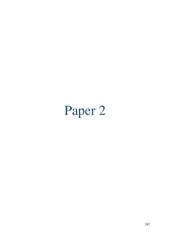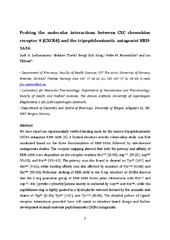| dc.contributor.advisor | Hansen, Jørn | |
| dc.contributor.advisor | Hanssen, Linda | |
| dc.contributor.advisor | Herzke, Dorte | |
| dc.contributor.author | Johansen, Martin Amund Langaas | |
| dc.date.accessioned | 2024-03-07T15:28:45Z | |
| dc.date.available | 2024-03-07T15:28:45Z | |
| dc.date.issued | 2023-05-25 | |
| dc.description.abstract | This thesis investigates the impact four different experimental marine conditions have on the extractability of tire additives meant to protect tires from UV radiation as well as some other common substances found in tires. The impact is evaluated between tire particle size and age to determine if the exposure affects them differently.
This thesis finds that the effect of marine conditions on extractability is more substance-dependent rather than particle size and age-dependent. In-depth evaluation of the development of extractability of five p-phenylenediamines (PPDs) was done and found that the most common among them (6PPD) had the least decrease in extractability over the course of the exposures. The same substance also had, by far, the largest percent content of them all, ranging from 64-97% of total extracted PPD content in samples. Its notorious transformation product 6PPD-Q was also detected in every single rubber sample with similar time-dependent extractability profiles as the rest of the PPDs.
Some effects of the experimental exposure on extractability were indicated. UV radiation exposure reduced the PPD extractability of the smallest particles, but no effect of UV radiation exposure could be determined on the larger particles. Experimental deep sea pressure conditions have no clear effect on the extractability of the substances. For each detected substance the latest time increment between the surface water and deep-sea samples within the same biotic influence groups was compared. It was counted that deep-sea pressure
exposed samples more frequently had a higher extractability than samples exposed to surface water pressures. No concrete tendencies could be seen over time in the hyperbaric experiments, so there was little to no development toward this conclusion. | en_US |
| dc.identifier.uri | https://hdl.handle.net/10037/33136 | |
| dc.language.iso | eng | en_US |
| dc.publisher | UiT Norges arktiske universitet | en_US |
| dc.publisher | UiT The Arctic University of Norway | en_US |
| dc.rights.accessRights | openAccess | en_US |
| dc.rights.holder | Copyright 2023 The Author(s) | |
| dc.rights.uri | https://creativecommons.org/licenses/by-nc-sa/4.0 | en_US |
| dc.rights | Attribution-NonCommercial-ShareAlike 4.0 International (CC BY-NC-SA 4.0) | en_US |
| dc.subject.courseID | KJE-3907 | |
| dc.subject | VDP::Mathematics and natural science: 400::Chemistry: 440::Analytical chemistry: 445 | en_US |
| dc.subject | VDP::Matematikk og Naturvitenskap: 400::Kjemi: 440::Analytisk kjemi: 445 | en_US |
| dc.subject | VDP::Mathematics and natural science: 400::Chemistry: 440::Environmental chemistry, natural environmental chemistry: 446 | en_US |
| dc.subject | VDP::Matematikk og Naturvitenskap: 400::Kjemi: 440::Miljøkjemi, naturmiljøkjemi: 446 | en_US |
| dc.title | Investigating the Effect of Pressure and UV Radiation on Antioxidant and UV Stabilizing Additives in Different Tire Particles | en_US |
| dc.type | Master thesis | en_US |
| dc.type | Mastergradsoppgave | en_US |


 English
English norsk
norsk



